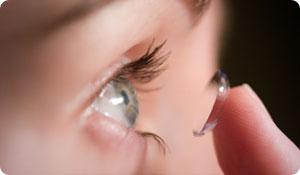
A study conducted by researchers from the US Food and Drug Administration reveals that almost a quarter of all emergency room visits caused by medical devices can be traced back to complications caused by contact lenses. These findings were included in the American Academy of Pediatric journal, Pediatrics, in September of 2010.
The researchers point out that adolescents between the ages of 11 and 21 are particularly at risk for improperly following the recommended safety practices and experiencing negative effects. Some of the types of injuries among patients in this age range include contusions or bruising of the eye, hemorrhaging, and pink eye.
Contact Lens Care
The good news is that most of these complications can be prevented with proper contact lens care. The FDA advises parents to closely oversee their children's contact lens usage and make sure they follow some easy safety steps, including:
- Remind your child to always wash his hands before inserting and removing the lenses.
- Insist the lenses be disinfected and stored according to the eye doctor's directions.
- Always have him use fresh solution to clean and store lenses. (Reusing the same solution more than once can increase the risk of bacteria and other problems.)
- Prompt him to clean and dry the contact lens case between uses to keep it free of infection-causing germs, and have him replace the case every three months with a fresh one.
- Teach him to use only sterile contact lens solution to clean and rinse lenses, and avoiding exposing them to water (including from your tap, as well as from swimming pools and the ocean), since this can increase the risk of eye infections.
Take Eye Symptoms Seriously
If your child does complain of any eye symptoms, such as redness, itching, or burning, always have him remove his contacts and see an eye professional promptly. Bring the lenses with you, since these may provide clues to what's causing the discomfort.
Get Regular Eye Checkups
Your child will also need frequent eye exams to monitor his prescription, as well as to check the quality and safety of the lenses. A general rule of thumb is to visit the eye care professional at least once every year, but always find out what your health insurance will cover and what your doctor recommends for your child's specific situation.
Sources:
American Academy of Pediatrics/Pediatrics Journal
http://pediatrics.aappublications.org/cgi/content/abstract/126/3/e550
Medical News Today
http://www.medicalnewstoday.com/articles/197240.php
Prevent Blindness
http://www.preventblindness.org/news/releases/eye_protection_essential_part_of_sports_safety.html





